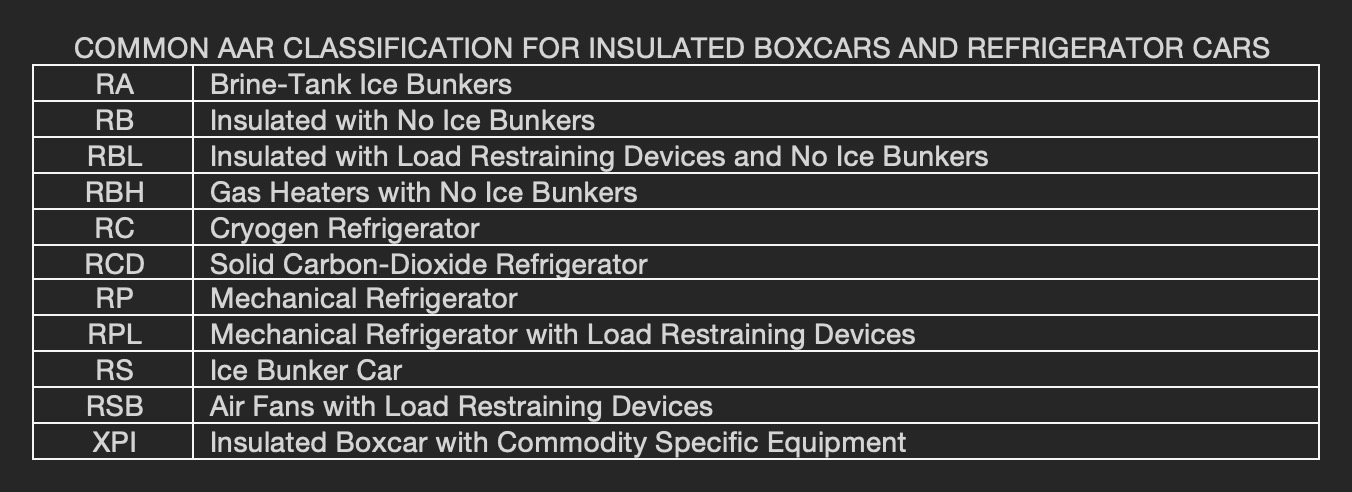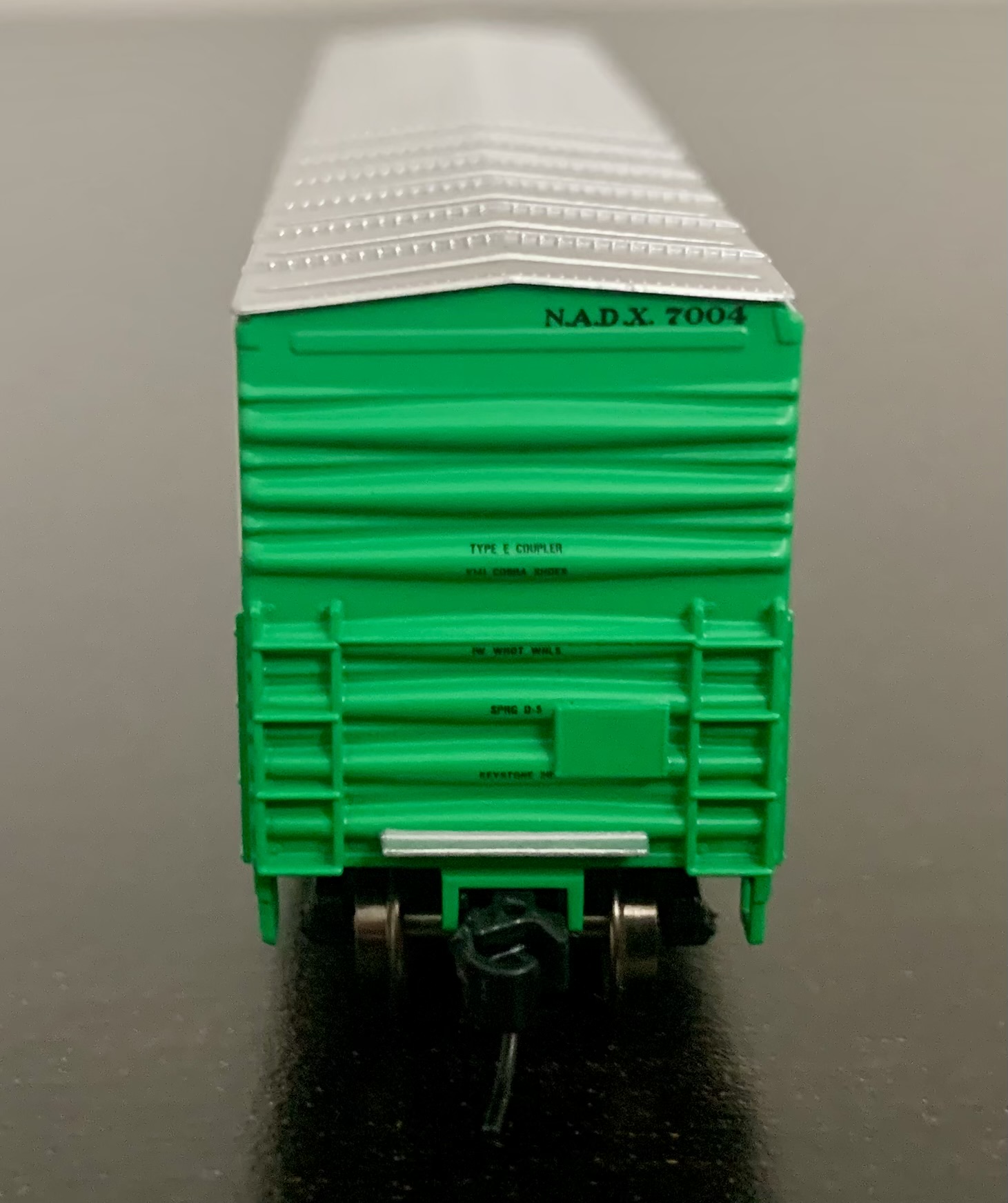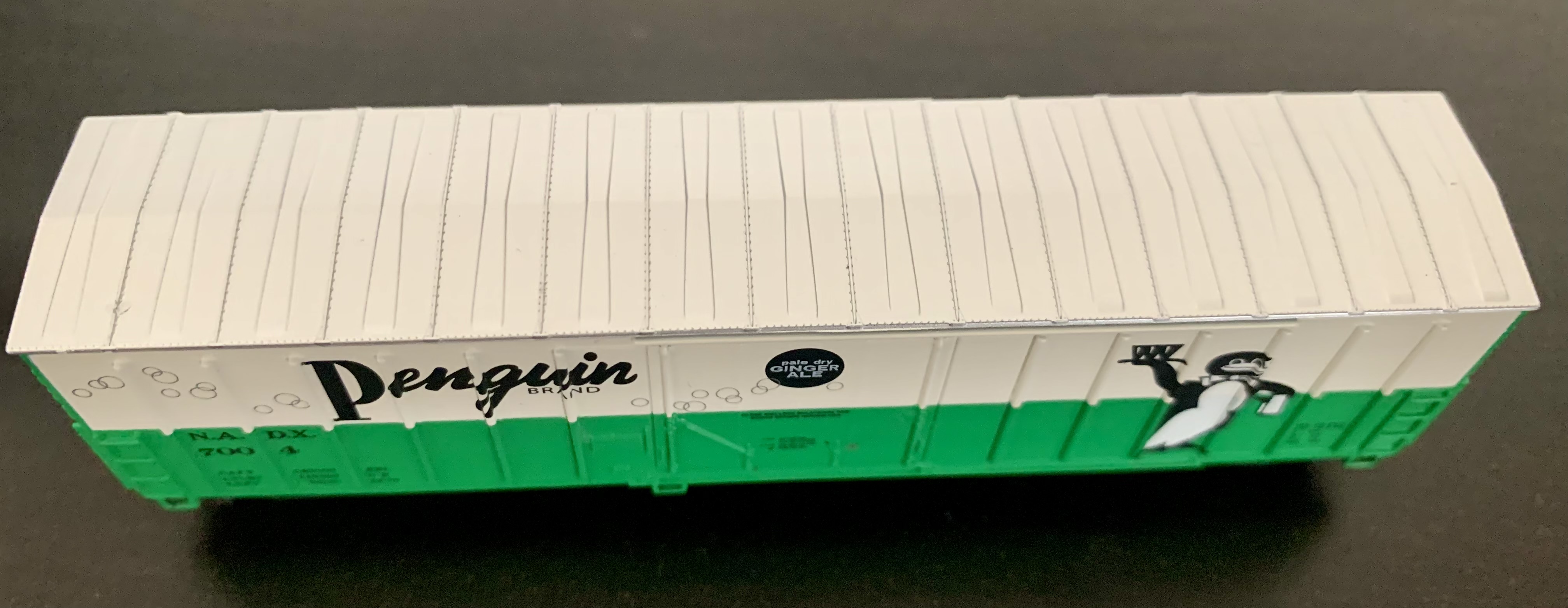Athearn 50-Foot NACC Insulated Boxcar
Published: 2024-05-01 - By: CNW400
Last updated on: 2024-05-02
Last updated on: 2024-05-02
visibility: Public - Headline

The Prototype
Established in 1907 and based in Chicago – the North American Car Corporation grew into a railroad institutional giant primarily through the leasing of rail equipment. They later entered the production business and built boxcars, hoppers, and tank cars. Their railcars were purchased or leased to private companies, often decorated with bold colors and lavish graphics. In 1986, General Electric Railcar Services acquired the controlling interests of North American Car Corporation for $420 million that included over 35,000 freight cars.The North American Car Corporation (NACC) built 50-foot insulated boxcar debuted in 1964. Advances with insulation material, such as polystyrene foam, enhanced internal temperature control of boxcars without the need for ice or refrigeration. The insulated boxcar was not designed to cool its lading, but instead maintain a consistent internal temperature within a few degrees over a several day trip. More than 1,300 insulated boxcars were produced during their initial release with the cars becoming popular with temperature sensitive commodities that needed protection from extreme heat or cold. These industries included the beverage (beer & wine), canned food, cheese, and heavy machinery lubricant trades.
To achieve the objective to regulate the environment inside an insulated boxcar, the car was equipped with a plug door instead of the conventional sliding door. Plug doors fit snug inside an opening – providing a watertight seal to sustain internal temperature and greater safeguard from the weather, dirt, theft, and infestation. The plug door system is used on both insulated boxcars and refrigerator (reefer) cars.
Another advantage of the NACC plug door was the flat surface it created inside the piece of rolling stock once closed. The smooth wall 50-foot insulated boxcar with external posts and 10-foot plug door was also attractive to industries that shipped product that could become damaged if the load shifted into internal bracing and locking brackets. Thus, paper rolls, high-grade woodwork, auto parts, and electronics were hauled in these boxcars – often with internal load restraints (straps, cargo bars, etc.).
Additionally, the external post design was calculated to provide greater side wall strength for the boxcar and furnish more interior room for cargo by maximizing shipping capacity.
The disadvantages of the plug door are higher manufacturing investment during production, the added weight of the door, and greater maintenance costs associated with the plug door over the sliding door. The plug door is fabricated with a complex arrangement of locking bars, swinging arms, and braces – more parts to become damaged or worn-out and increasing material and labor costs for the railroads. But safety and service does come with a price.

Road Names and Pricing
Three unique road numbers were made available for each paint scheme. The models were announced in July 2022 and released to the public in December 2023 with a suggested retail price of $31.99 per boxcar.- Alumax Inc.
- Central of New Jersey
- Delaware & Hudson
- Dresser Magcobar
- Hamm’s Beer
- Penguin Ginger Ale
The Model
The ready-to-run plug door boxcar came delivered in a plastic jewel case with a slip-off cover and a thick two-piece clear plastic cradle to support the model. A thin chipboard sleeve housed the jewel case until unpackaged. The model information is clearly printed on the end of the case and yellow sleeve for ease to locate when in storage. A thin plastic sheet was wrapped around the car to protect the model from scuffmarks. No additional detail parts were found inside the case.
The paint job is bold and clean along the entire injection molded plastic model. The Penguin Brand Ginger Ale boxcar has a vibrant parakeet green and white body with black lettering and a shiny silver roof. All lettering is neat and legible – even when magnification is required for tiny printing. A spiffy tuxedo-clad penguin greets us as the boxcar passes. The jolly gent is adorned with bowtie, waiter’s towel, and a tray full of drinks…and they didn’t forget the bubbles. This nostalgic paint scheme is what attracted me to this car – it puts a smile on my face.

Penguin Soda was the house brand carbonated beverage of the Grand Union Supermarket chain. The flavors of soda pop in the Penguin family included: Black Cherry, Cola, Cream Soda, Fruit Punch, Ginger Ale, Grape, Lemon, Orange, and Root Beer. The Grand Union Company was founded in Scranton, PA in 1872. Grand Union had a strong presence in the northeastern United States along with some locations in the Midwest and South. Grand Union filed for bankruptcy protection in 2001 and was acquired by C&S Wholesale Grocers. Tops Friendly Markets purchased the remaining Grand Union stores from C&S in 2012 and discontinued the Grand Union private label brands the following year. Finally, as part of a planned merger with Price Chopper Supermarkets, Tops Markets was ordered to divest itself from twelve supermarket locations. Those twelve stores were repurchased by C&S and relaunched AGAIN as Grand Union stores on November 9, 2021 (boy - that was a mouthful!).

The sides exhibit the prototype correct six exterior post patterns on both sides of the Pullman-Standard plug door. Athearn Model Trains has supplied both Pullman-Standard or Superior plug doors – to correctly match prototypes for ‘real life’ boxcars. The Pullman-Standard door features two vertical door braces with diagonal locking bars (V-shaped design). The Superior door has a more waffle pattern with a series of vertical and horizontal bars. Also featured on each side are three etched metal stirrups steps, a low mounted placard board, and molded four-rung ladders at each corner. This is prototypical correct as roofwalks were not required on new rolling stock built after January 1, 1967, and our fantasy painted Penguin Ginger Ale car has a built date of 12-70 (full length ladder to roof top was no longer needed).


The ends feature Stanray 3/4 pressed improved Dreadnaught patterns with a molded silver crossover walkway and placard board. Stanray Dreadnaught ends have horizontal corrugations that taper with narrow corrugations between. The ends can be riveted or welded. Both ends also display two short length ladders and the road number stamped in the upper right corner. The B-end has an Equipco or Minor brake wheel mounted in a lower position with brake chain detail.


The top of my boxcar displays a Pullman-Standard proprietary bowtie 15-panel design. The Pullman roof panel sections have a slanted-diagonal pattern that are wider at the outside and become narrower at the peak creating the illusion of a ‘bowtie’. The silver roof has nice, sharp rivet detail and no roofwalk or topside grab irons needed for this era boxcar. Again, Athearn also made the Stanray roof design available to match prototype-specific rolling stock.

The black underframe featured separately applied brake cylinder, brake reservoir, and brake rod. The boxcar has screw mounted 70-ton trucks with shiny 33” machined metal wheels. Lastly, the model is equipped with proper height body mounted plastic McHenry operating knuckle couplers.

The car measures 3 3/4 inches in length and weighs 1.4 ounces, which is a bit heavy according to the National Model Railroad Association (NMRA) recommendations (which are 1.1 - 1.2 ounces for this size car). Athearn added weight for optimum running performance – the extra heft was not a problem. The model felt solid in my palm, and I experienced no issues while testing the car on Kato Unitrack around curves or through turnouts at slow and medium speeds. The recommended minimum operating radius is 9 3⁄4" for both Code 55 and 80 rails.
Another winner for Athearn Model Trains – an attractive and faithful representation of the 50-foot insulated boxcar. Points scored for supplying multiple prototype correct door and roof selections for each road name. No need for modifications to run smoothly with metal wheels and extra body weight. Don’t be a HAMM, open your wallet and POP for a couple of these Athearn NACC Insulated Boxcars.
To View More of the Athearn 50-Foot NACC Insulated Boxcar Collection – CLICK HERE

